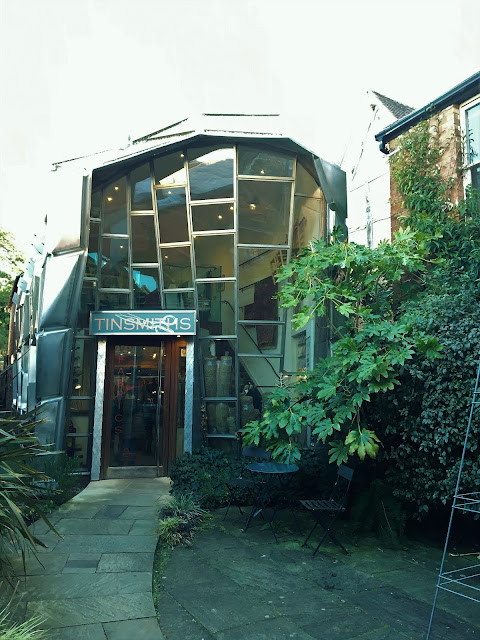Two weeks ago now and on the way to family in Worcestershire we made a breakfast stop in Ledbury, Herefordshire. I hadn't been there for years and I was eager for a return visit to the parish church of St Michael and all Angels, a large town church of warmest sandstone, vibrant in the sparkling winter sunshine. So much more noticeably colder than Swansea, with a heavy, lingering frost on the churchyard grass.
St Michael's is reached from the High St by the almost improbably picturesque Church Lane - a fitting lead up to a church that is rich in texture and is architecturally complex and varied. Quite my sort of place. So where to begin, when stepping through the fine churchyard gates and you are met with such a competition of interest with all the elements begging for your attention - detached bell tower, north transept, two storey porch and west front with a great Norman west door embedded in its midst? I made for the north transept which I had completely forgotten about until I saw it illustrated in a book by Basil Clarke and John Betjeman. It was so intriguing and so beautiful I had to return one day. It took two years from buying the book in a second-hand bookshop in Cromer to make the journey. It did not disappoint at all. It is an exquisite piece of architecture. Early decorated, with vast windows encrusted with a plethora of ballflower ornament, a Herefordshire/Worcestershire speciality. Think sleigh bells! I particularly loved the small, richly detailed doorway poking its head into one of the windows in the west wall. In all exceptional. And so then to the rest of the church. The chancel is Norman, but the nave is Decorated Gothic, though not as elaborate in style as the N transept. Workman like, I'd say, but far from unattractive.
The aisle windows are exceptionally tall, because the vast interior, all reddy-brown for the walls have at one time been stripped of plaster, is a hall-church of sorts with nave and aisles are equal height separated by thin arcades of octagonal piers (the work of two separate building campaigns by the look of it) giving a great sense of space and height (there is no clerestory). The chancel though retains its original Norman arcades and now function-less circular clerestory windows. The three parallel roofs are open and a little dark it has to be said, but the interior is rich in civic and funerary trumpery. We would have lingered but the there was a meeting getting underway in the Lady Chapel so I felt unable to fully explore the east end. Still, it is an excuse to return.

























Ledbury is a beautiful place with a mixture of sandstone, warm red brick and half timbering. I love the architecture and the urbanism of these west Midlands market towns. Apart from architecture the shopping in Ledbury is exceptional for a town of its size. On the east side of the High St are a number of yards and alleys that contain some fantastic shops, one of which, Tinsmiths, I have to confess, was, after reading about it on my friend Ben Pentreath's blog, another reason for my visit.


















































